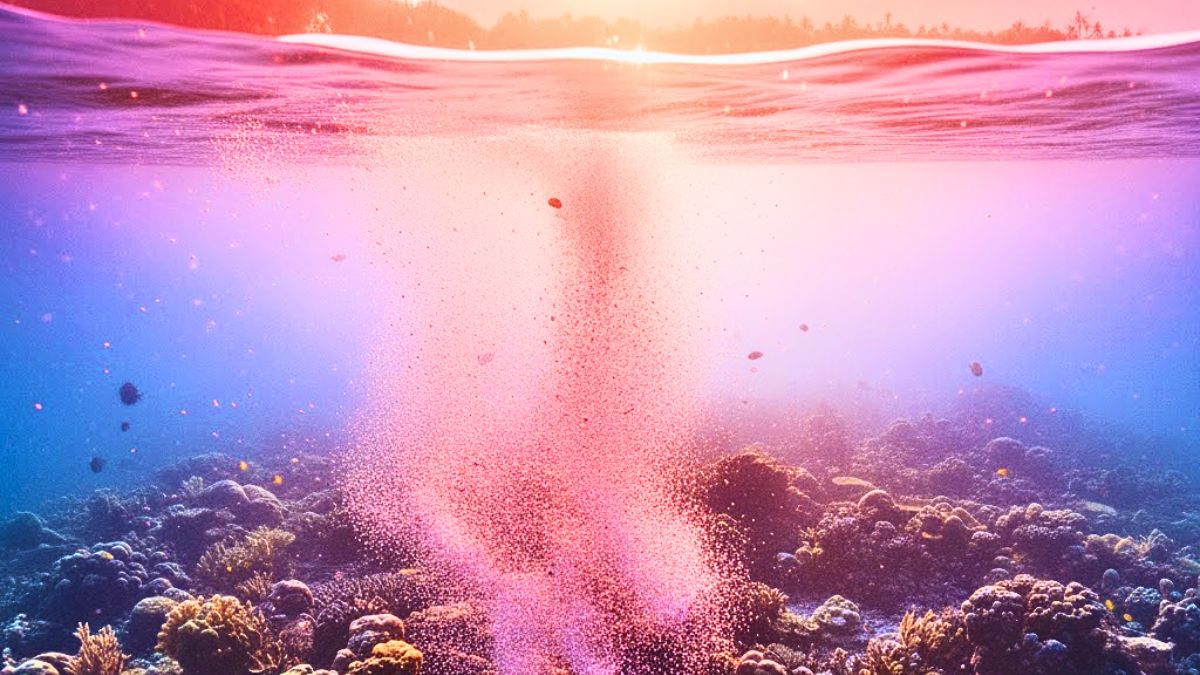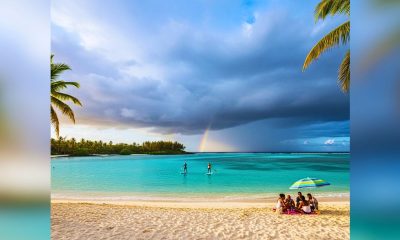News
Pink Sea Phenomenon: Coral Spawning Sparks Hope for Struggling Reefs

The ocean along the country’s south-east coast is offering a rare spectacle of rebirth, as a breathtaking natural event turns the sea a fleeting shade of pink, signalling that nature is fighting back against environmental pressures.
This vivid display is not pollution or a coloured tide, but the natural and rare mass spawning of corals, an event marine biologists are calling a “sign of hope” amid global warming and reef bleaching.
Core Details of the Phenomenon
For just a few hours, the sea adopts a rosée, almost red, hue. This happens when millions of tiny coral colonies synchronise to release their gametes—eggs and sperm—into the water.
- Appearance: These floating particles form a pale pink veil that drifts with the currents on the surface.
- Location: The event is most visible where reefs remain healthy, particularly around Blue-Bay, Mahébourg, and Pointe-d’Esny.
- Timing: Spawning typically occurs between October and December, a few days after the full moon and just after sunset.
This precise, synchronised release is nature’s “millimetre-perfect choreography,” designed to maximise the chances of successful fertilisation.
Significance to Marine Biologists
For scientists, observing the spawning is crucial. It provides evidence that, despite the growing threats of climate change and the progressive bleaching of reefs, some corals remain healthy and retain their ability to regenerate.
“Observing the spawning is like witnessing the renaissance of the lagoon,” said Yves, a local fisherman. “It means the corals retain their capacity to reproduce, and it is still possible to restore degraded areas if we protect these ecosystems.”
A Striking Underwater Spectacle
Divers report an even more arresting sight beneath the waves, where “rosy clouds rise from the corals like a living mist.”
- An experienced Blue-Bay diver described the moment as “chilling,” saying, “When you see the sea filling with life like this, you realise how fragile everything is. Protecting the lagoon is not a luxury, it is a responsibility.”
Local Reaction and Preservation Plea
The spectacle has drawn curiosity and wonder from both residents and divers, serving as a powerful reminder of the importance of preserving the reefs, which are vital “lungs of our lagoons and shelters for marine life.”
- Historical Context: Sabrina Chetty, a Mahébourg resident, noted, “The elders said it was a sign of life in the sea. Today, we understand better why; it is nature continuing its cycle despite everything it is enduring.”
- Cautionary Note: Divers are strongly advised not to touch or disturb the corals during this critical period, as the slightest contact or abrupt movement can disrupt reproduction. They are also urged to film or photograph without excessive flash and to avoid stirring up sand, as particles can affect visibility and stress the corals.
Source: l’Express











